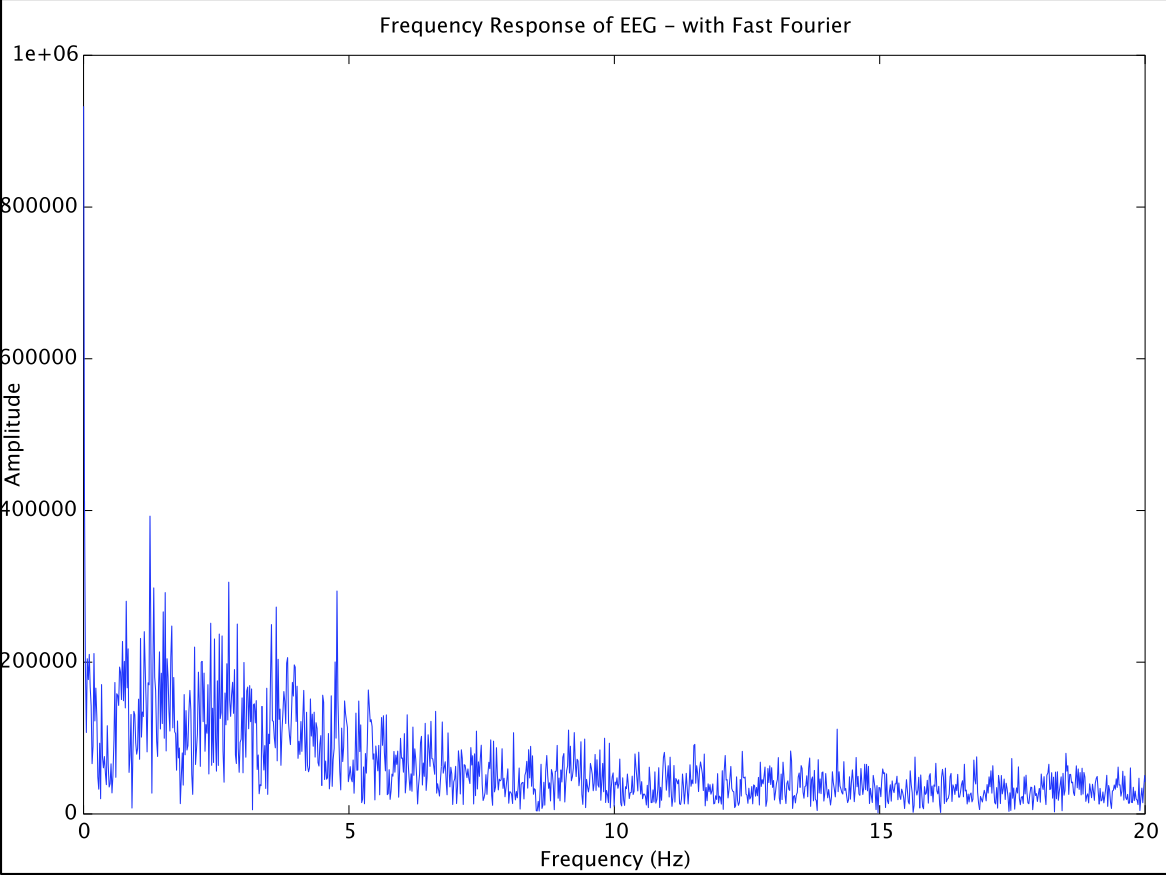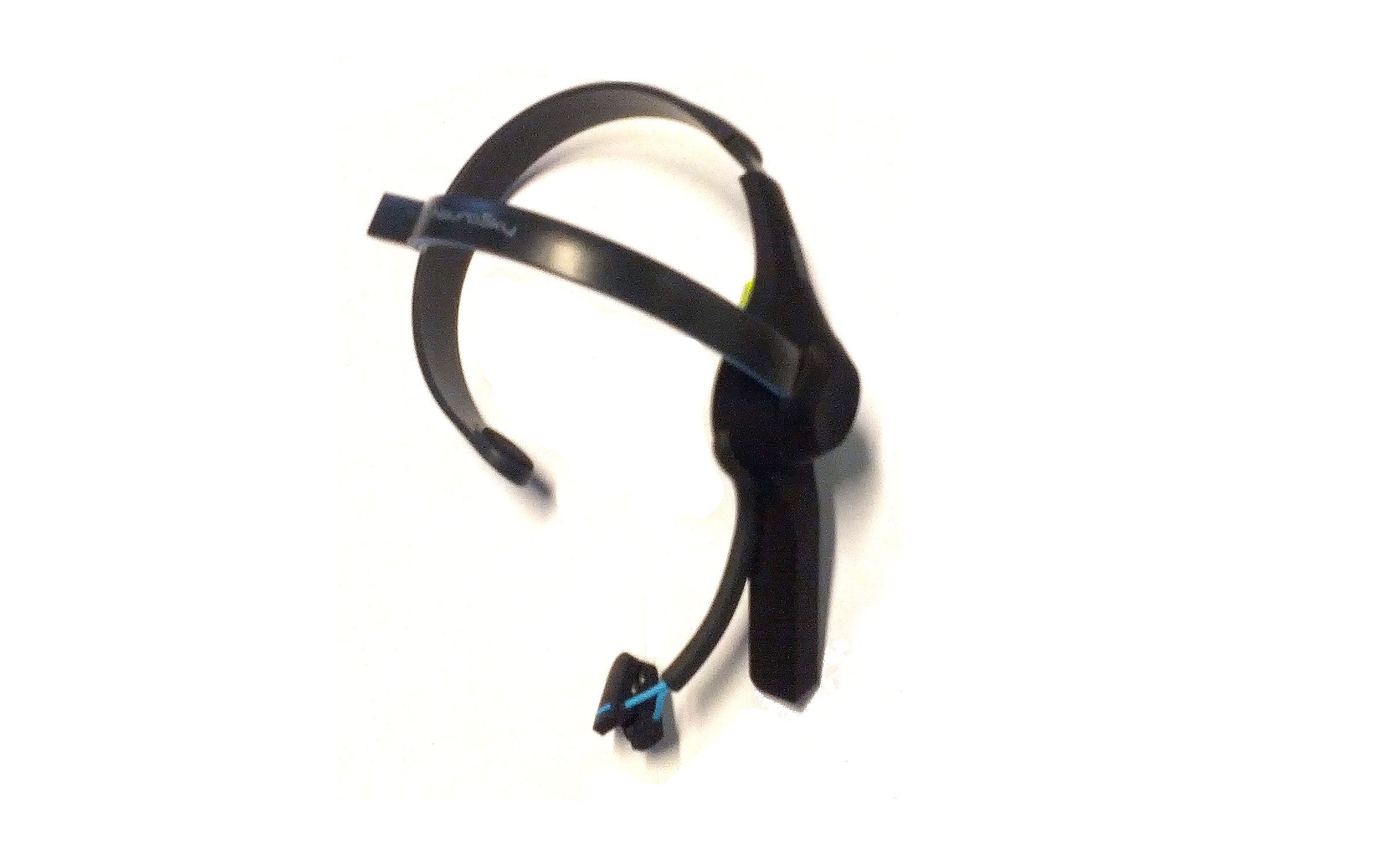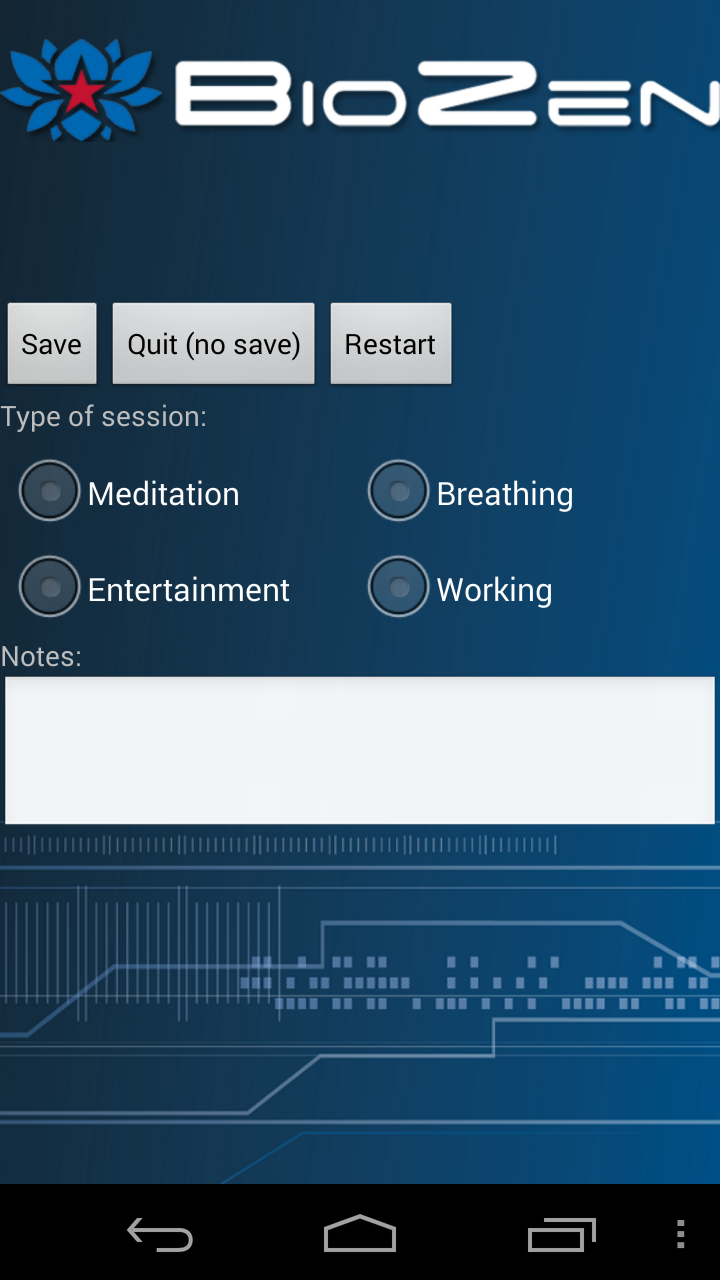2 Background¶
In this chapter we start out briefly explaining what EEG is and how a Brain-Computer Interface (BCI) works including typical approaches to data processing and classical applications. We then move on to describe relevant consumer BCIs. Finally, we outline neurofeedback training and how it relates to stress reduction. We conclude the chapter with an overview of neurofeedback systems which are either aimed at consumers or using consumer BCIs.
2.1 BCI / EEG¶
The brain consists of billions of neurons. Communication between neurons is manifested in electrical signals. Electroencephalography (EEG) measures this electrical activity along the scalp. This is a well established technique from the 1920s. EEG has a low spatial but a high temporal resolution which makes it ideal for recording changes in brain activities in response to events. A BCI takes brain activity - for example in the form of an EEG signal (which is the case for all BCIs mentioned in this thesis) - as input [61]. For example, Figure 2.1 shows an EEG signal with visible alpha waves.
Brain activity is not the only source of electrical signals along the scalp. Muscle activation also relies on electrical signals, the measuring of which is called electromyography (EMG). Eye movement furthermore discharges electricity due to the eyes dipole properties - measuring this signal is called electrooculography (EOG). In the context of measuring EEG, EMG and EOG are typical noise artifacts [43].
EEG is measured either with stand-alone electrodes or electrodes attached to a cap. Examples of high fidelity EEG BCIs are the gamma-2-cap from g.tec1 and Easy Cap from EASYCAP 2. Some caps can even have up to 256 electrodes mounted [61]. Caps need mounting preparations with gel to improve the conductivity between scalp and electrodes. We have tried out the gamma-2-cap during a BCI seminar in Aalborg 2013 (Figure 2.2). A hi-fi EEG based BCI cost around 10-15.000 Euro and includes, for example, a cap with electrodes, cables and an amplifier.
The EEG data is usually processed and analyzed off line with tools like EEG-lab [19] or FieldTrip [52] which are open-source plug-ins to MATLAB 3.
2.1.1 Classic BCI applications and techniques¶
There are different approaches to processing a raw EEG signal. Some of these and their typical applications are briefly covered below.
Evoked Potentials correlates visual/auditory stimuli with EEG responses. When an event of significance is perceived, the brain fires certain action responses. One widely used response is the P300 which manifests itself as a peak in the EEG signal 300 ms after a stimulus - for example a flash of an image. In the intendiX 4 P300 speller application from g.tec different letters are flashed for user while the P300 action response is used to determine which letter the user wants to select.
Motor imagery is another classic approach to BCI in which an imagined movement of a body part causes motor cortex activity which is detected by the BCI. In this way imagined movement can be used for example to control wheel chairs and other vehicles [46]. This technique has been used in gaming as well, e.g. for trigger activation [17]. Motor imagery requires spatialization (localization) of brain activity especially within motor cortex. This presents a challenge for EEG based BCIs since they have a low spatial resolution.
Classification of EEG signals are widely used within BCI applications. For example, it has been used for unique identification of a person for authentication purpose [57]. Various research groups uses classifications to predict epilepsy attacks [58][47]. Others do pattern matching on walking motions for assisting in rehabilitation after strokes [36]. This approach has also been used to classify: (i) emotions like joy and anger; and (ii) human expressions like a happy facial expression or a mental mood [21] [11] [30].
Figure 2.3: Raw EEG and Fast Fourier transformed EEG.
Frequency analysis is another technique for processing EEG data. Neurons are organized in networks and communication among them is always ongoing in oscillatory patterns. Frequency analysis estimates the power of each frequency component. One common approach to frequency analysis is to apply Fast Fourier transform (FFT) - a simple example is plotted in Figure 2.3. When applying FFT we go from a time domain into a frequency domain as can be seen on the x-axis values of the plots before and after FFT. Frequency analysis is often used in conjunction with other methods of analysis - for example to extract features for classification [61]. It is also used stand-alone either for neurofeedback or in research aiming to correlate certain frequency patterns with some condition or cognitive task. This is very typical within EEG research exemplified by a study showing that "... high resting theta power in healthy older adults is associated with better cognitive function" [24].
Frequency analysis is interesting due to the correlation between frequencies and mental states [27] [54]. A rough overview is lined up in Table 2.4.
| Brainwave Type | Frequency range | Mental states and conditions |
|---|---|---|
| Delta | 0.5Hz to 3.5Hz | Deep sleep |
| Theta | 3.5Hz to 8Hz | Falling asleep |
| Alpha | 8Hz to 12Hz | Relaxed awake state (dominant with eyes closed) |
| Beta | 12Hz to 30Hz | Mental activity, attention, concentration |
| Midrange Beta | 16Hz to 20Hz | Thinking, aware of self & surroundings |
| High Beta | 21Hz to 30Hz | Alertness, agitation |
| Gamma | 30Hz to 100Hz | Reflects the mechanism of consciousness |
Figure 2.4: Generalized frequency bands
The hi-fi BCIs are getting mobile. This trend is exemplified by a mobile version of the Easy Cap and helmets with built in EEG sensors for soldiers [45]. Another branch of BCIs that have come far in getting mobile are the consumer BCIs as described in the next section.
2.2 Consumer BCIs¶
Within recent years consumer BCIs have emerged and moved BCIs outside the laboratories. An early consumer BCI was the Neural Impulse Actuator (NIA) 9 released in 2008 featuring a three forehead sensor configuration and connectivity through a desktop box with cables. NIA was intended primarily for gaming and cost around 100 USD (it is not in production any longer). Consumer headsets today typically offer additional sensors (accelerometer, gyroscope, etc) and wireless connectivity. An overview of current state consumer BCIs is presented in Table 2.5.
| Feature | Emotiv EPOC (Research) | MindWave Mobile | TrueSense Kit (OPI) | Muse | Emotiv INSIGHT |
|---|---|---|---|---|---|
| Raw EEG | No / Yes | Yes | Yes | Yes | Yes |
| Electrodes | 14 | 1 | 2 | 4 | 5 |
| Locations | AF3, F7, F3, FC5, T7, P7, O1, O2, P8, T8, FC6, F4, F8, AF4 | -- | -- | AF3, AF4, TP9, TP10 | AF3, AF4, T7, T8, Pz |
| Sensors type | Wet | Dry | Dry/gel | Dry | Dry |
| Sampling rates | 128Hz | 512Hz | 512Hz | 100-600Hz | 128Hz |
| Protocol | USB Dongle | Bluetooth | ZigBee | Bluetooth | Bluetooth |
| Power | 12 hours | 6-8 hours (AAA bat.) | 18 hours | 10 hours | 4 hours |
| Off Line recording | N/A | N/A | Memory chip | N/A | microSD card |
| Extra Sensors | Gyroscope | None | Accelerometer, temperature | Accelerometer | Accelerometer, magnetometer |
| SDK | OSX, Windows | Android, IOS, Windows, OSX | Linux, Windows, OSX | Android, IOS, Linux, Windows, OSX | Android, IOS, Linux, Windows, OSX |
| Price | 300/750 USD | 100 EURO | 40 EURO | 269 EURO | 300 USD |
| Released | 2009 | 2011 | 2013 | Ann. 2014 | Ann. 2014 |
Figure 2.5: Listing of consumer BCIs compared by selected features.
These headsets are interesting to our project. Relevant features and how they have been used in research is lined out in the next sections.

(c) TrueSense Kit. The image show USB controller (w. ZigBee receiver), memory module and TrueSense sensor band.
Figure 2.6: Images of 3 consumer BCIs.
2.2.1 Emotiv EPOC¶
EPOC has out of the box a desktop SDK and a set of tools aimed at gaming. The closed source SDK provides detection of emotions, expressions, cognitive states and more 6 (Figure 2.6a).
There is also a research edition of the EPOC headset which can record raw EEG. It comes with the TestBench desktop application for recording and viewing the raw EEG data. TestBench can process EEG into various frequency bands and the raw EEG data can be exported in an EDF-format (multichannel biological and physical signals) 7 (Appendix Emotiv EPOC TestBench).
Before using the EPOC headset, the user has to moist each of its 14 electrode in a saline solution and then attach each electrode to the headset. This preparation took us about 10-15 minutes when some routine was achieved.
The EPOC has no SDK for mobile devices, but has been hacked for mobile usage in conjunction with the USB dongle - we return to this in Section 2.4.
EPOC seems to be the consumer BCI that appears most frequently in research papers. An overview of its application within research is given below.
The FlyingBuddy2 uses motor imagery to make it possible for a disabled person to steer a Drone with the future perspective of steering a wheel chair [72]. A group in Spain uses the out of the box SDK classified facial expression (based on EMG) such as open and close clinch combined with EOG data to steer a tractor [26]. Again using SDK classifications, an emotion based chat application has been build featuring avatars that changes their expression from angry to happy based on the emotional state of a person [70]. In a recent M.Sc. thesis the EPOC was used for a brain wave biometrics authentication system [53]. The NeuroPhone project used a P300 approach to make phone calls on a smart phone - however the EEG processing was performed on a laptop [16]. Finally, EPOC has also been used in a human-robot interaction study where they used EEG to classify human satisfaction of the interaction with a robot [23].
EPOC has also been used by media researchers at the Danish Broadcasting Corporation (DR) as a supplemental tool to qualitative interviews and questionnaires. Throughout the video screening of a TV Drama production, the screening participants' brain states were measured in terms of EPOC SDK values such as excitement, frustration and attention. In an interview with Harddisken (a DR radio program about technology), Jacob Lyng Wieland - in charge of the experimental usage of BCI during video screenings - reported that they had skipped using the EPOC headset because it was too cumbersome to use 8.
2.2.2 NeuroSky MindWave Mobile¶
NeuroSky MindWave Mobile (MindWave) 10 offers desktop and mobile SDKs (IOS and Android). The closed source SDK features frequencies processing and analysis outputting values for the level of "attention" and "meditation" [50] (Figure 2.6b). The SDK also provides information about eye blinks and a number of frequency bands which we previously have lined out in Figure 2.4. The MindWave SDK outputs the following frequency bands: delta (0.5 - 2.75Hz), theta (3.5 - 6.75Hz), low-alpha (7.5 - 9.25Hz), high-alpha (10 - 11.75Hz), low-beta (13 - 16.75Hz), high-beta (18 - 29.75Hz), low-gamma (31 - 39.75Hz) and mid-gamma (41 - 49.75Hz) [51].
The headset is easy to use and the SDK includes a simple Bluetooth API that seamlessly supports device connectivity. Due to its connectivity options and SDK signal processing, the MindWave Mobile requires little effort to embed in a prototype. This has been done, for example, in a recent paper by Marchesi. He uses MindWave in the BRAVO project to detect attention among school children in an e-learning setting. If a child's attention level is under some threshold, it its reported to the other children who are encouraged to offer their help [44]. In another study, a research group uses MindWave to measure attention during an online game. They specifically look at the attention levels provided by the SDK versus self reported attention levels among a group of participants. They conclude that the self reports and the SDK values are correlated [56]. Another paper uses the attention and meditation SDK values to examine the stress levels among participants while performing various tasks. It concluded that the MindSet 12 was able to measure an increase in stress induced by the tasks performed (Stroop test, Tower of Hanoi) [18]. In [71] the brain state - defined in terms of EEG frequency composition - of a test subject driving a car is measured by a predecessor to the MindWave. Raw EEG data is recorded to a mobile phone via bluetooth and its frequency composition is analyzed offline. Interestingly, the results show a change in the brain wave frequency pattern when the driver performed, for example, a phone call. Finally, in a M.Sc. thesis, classification of the raw EEG data from the MindSet is used to control a snake-like game aimed at children [37].
MindWave comes out of the box with a mobile application named Brainwave Visualizer which let its user inspect the current levels of the 8 frequency bands supported by the SDK. The app also provides simple neurofeedback by letting its user control the flying height of a ball by the SDK "meditation" value or the intensity of a flame by the SDK "attention" value. The same approach to neurofeedback is used in the third party app Transcend by Personal Neuro. During meditation the user can get a flower to grow by increasing the "meditation" SDK value 11.
2.2.3 TrueSense Kit¶
TrueSense Kit is the newest, cheapest, most portable headset. It comes with OPI Console, an open source desktop application for recording and viewing raw EEG data and analyzing sleep, meditation etc. from recorded EEG. It also enables exporting data as EDF-files for further processing and analysis in other applications. The OPI Console also offers sleep analysis and yoga performance analysis 13 (Figure 2.6c, Appendix TrueSense Kit console). The TrueSense Kit sensor(s) can be placed on various parts of the body for measuring blood flow, heart rate, body temperature and body movements.
TrueSense Kit records either directly to an internal memory module or transmit data over ZigBee radio to the OPI Console through a USB receiver. The sensors can be combined in a multi sensor configuration attached various places on the head or body.
TrueSense Kit provides no immediate mobile device connectivity but the OPI Console application can likely be ported to Android since it is build with the QT framework 14. Another approach would be to build a native C++ Android module from the TrueSense Kit C++ SDK. Since few Android devices currently support ZigBee out of the box, this would require an external receiver board.
TrueSense Kit is not yet covered in any papers despite its support for flexible experimental setups. TrueSense Kit was warmly received by the quantified self community at the yearly QS conference in Amsterdam 2013 15.
2.2.4 Future headsets¶
New consumer BCIs are about to arrive, for example Muse 16 (as briefly mentioned in the Introduction Section 1.1) and Emotiv INSIGHT 17. These new headsets have some characteristics in common which seem to be representative for the new generation of consumer BCIs:
- they support Bluetooth
- they use dry electrodes
- they are discrete and comfortable to wear
An interesting fact is that both of these headbands are crowdfunded. Muse raised 287,472 USD in 2012 from an unknown amount of supporters at Indiegogo 18. EPOC Insight had pledged 1,643,117 USD by the end of September 2013 from nearly 5000 people on Kickstarter 19. This trends an interest in low cost consumer BCIs and exemplifies pretotyping by presenting and selling the product before it has actually been build [32].
Most importantly, these new BCIs strengthen the possibility for neurofeedback among consumers in their daily settings. In the next section we focus on the neurofeedback concept.
2.3 Neurofeedback¶
When given real time feedback on its oscillations, the brain can learn to control and change them. This is interesting since the brains oscillations are significantly correlated with brain functions and behavior as well as with psychiatric diseases [73]. Neurofeedback training exploits this mechanism by providing feedback based on oscillation frequencies correlated with some desirable function or behavior.
The neurofeedback mechanism was discovered and developed in the 1960s, but the first controlled studies providing clinical evidence supporting neurofeedback training effects were published in the 1980s [5]. Since then, the efficacy of neurofeedback therapy has been documented in several studies [40] [6] [69] and neurofeedback 20 is listed among the treatments with highest evidence support for certain conditions according to The American Academy of Pediatrics (AAP) [1]. Neurofeedback is routinely used in treatment of a number of conditions including Attention Deficit Hyperactivity Disorder (ADHD), anxiety, epilepsy, and addictive disorders [5].
Besides its clinical usage, a number of studies show that neurofeedback training can increase cognitive performance. For example, it has been shown to increase semantic working memory, focused attention, perceptual sensitivity and reaction time [5]. Neurofeedback training has also been shown effective by real-life behavioral measures - e.g. by increasing musical performance in a stressful context among conservatory students in a study designed to ensure ecological validity [22].
2.3.1 Neurofeedback in practice¶
In a typical clinical context, neurofeedback sessions of 45-60 minutes duration are performed twice per week. The number of treatments depend on the individual response to the training and the condition being treated - e.g. 40-80 sessions are suggested in ADHD treatment [5].
Neurofeedback therapy is relatively expensive. For example, 40 training sessions cost > DKR 30.000,- at Ann-Helen Pettersen's clinic 5.
2.3.2 Stress and alpha feedback training¶
Alpha feedback training is the subset of neurofeedback training for which the goal state of the feedback is defined in terms of the amount of alpha waves - thereby seeking to increase the alpha activity.
Alpha activity is associated with a relaxed consciousness [5]. Together with theta, alpha is the EEG frequency band in which effects of meditation are most significant [4] [15]. Alpha 'blocking' (i.e., reduction) is associated with alertness [5]. Thus, by increasing alpha levels, alpha feedback training has been shown - amongst other positive effects such as increased cognitive performance - to reduce stress and anxiety [73] [5] [69].
With a classification approach, EEG has been used to classify subjects from either a chronically stressed or a control group with a success rate higher than 90% [33]. This testifies to the manifestation of stress in EEG data.
The dominant frequency within the alpha band - the alpha peak - and the amplitude of the alpha band varies between individuals [9] [5] [73]. An alpha feedback training system can account for this by calibrating according to the individual alpha peak and the baseline amount of alpha. This is, for example, the approach taken in the alpha feedback system presented in [59]. The importance of giving feedback on individually determined frequency bands is investigated in [9] and concludes that "Neurofeedback training applied in individual EEG frequency ranges was much more efficient than neurofeedback training of standard EEG frequency ranges".










